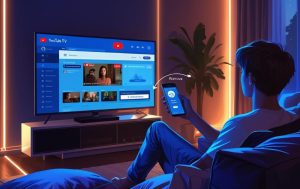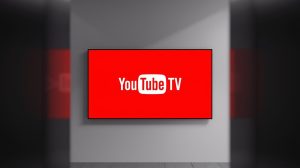
What is YouTube TV? A Complete Guide for Streamers
What is YouTube TV? A Complete Guide for Streamers Table of Contents Streaming television has completely changed the way we watch shows, sports, and news.
If you’ve ever faced the frustrating YouTube TV video format not supported error, you know how it can bring your streaming session to a halt. This common issue often appears when YouTube TV cannot play a video due to incompatibilities with your device’s video decoding capabilities or software setup. Fortunately, understanding the root causes of the YouTube TV video format not supported message and applying the right fixes can have you streaming your favorite shows again quickly.
tv. youtube.com has become a go-to streaming service for millions, thanks to its wide content selection and easy access across multiple devices. However, when the dreaded YouTube TV video format not supported error pops up, it usually points to problems like unsupported codecs, incorrect streaming formats, or resolution problems on your device. This guide will help you identify why the error happens, walk you through device-specific fixes, and share universal solutions so you never miss a moment of entertainment.
The YouTube TV video format not supported error tends to arise in specific situations and on certain devices or platforms. Understanding these scenarios will help you pinpoint when you might encounter this error:
Most commonly, this error occurs when the device’s video decoder or app cannot handle the streaming format or video codec used by YouTube TV.
To fix the YouTube TV video format not supported error effectively, it helps to understand the key reasons behind it. Here are the main causes:
By targeting these causes, you can often fix the YouTube TV video format not supported issue quickly and restore smooth streaming.
The YouTube TV video format not supported error on Chromecast devices often stems from outdated firmware or HDMI handshake issues. To fix this:
Firefox users on Linux distributions frequently report YouTube TV video format not supported errors due to DRM settings:
For users streaming YouTube TV via Vivaldi browser on Windows, the YouTube TV video format not supported error may be linked to hardware acceleration and decoding issues:
Here are some tried-and-tested universal fixes that help resolve the YouTube TV video format not supported error no matter your device:
Applying these steps frequently fixes the YouTube TV video format not supported issue quickly.
If you’ve tried all the above troubleshooting steps and the YouTube TV video format not supported message still appears, it’s time to reach out for expert help. Contact YouTube TV support or a specialized service like YouTVStart.com if:
Getting professional assistance can help you resolve complex codec or hardware issues that basic troubleshooting can’t fix.
To avoid running into the YouTube TV video format not supported error again, take these preventive measures:
By maintaining these habits, you can enjoy uninterrupted streaming without worrying about format errors.
When it comes to compatibility, here’s how YouTube TV stacks up against popular competitors regarding codec support, DRM, and multi-device stability:
YouTube TV’s strong codec and DRM implementation make it a reliable choice for most devices, but the YouTube TV video format not supported error can still occur when device or software incompatibilities arise.
The YouTube TV video format not supported error can be annoying, but with the right knowledge and steps, it’s almost always fixable. Most issues stem from codec incompatibilities, DRM settings, or streaming format mismatches that can be resolved by updating your software, adjusting device settings, or switching browsers.
By following the troubleshooting methods outlined in this guide and maintaining good streaming habits, you can enjoy uninterrupted tv.youtube tv/start viewing with minimal risk of encountering this error again.
If you need expert assistance with YouTube TV setup, activation, or troubleshooting the YouTube TV video format not supported error, YouTVStart provides professional 24/7 support to get you back to streaming quickly and hassle-free.
A: This error usually appears when your device or browser cannot decode the video due to an unsupported codec, missing DRM support, or an incompatible streaming format.
A: Try updating your device firmware and YouTube TV app, enable DRM content playback in your browser, clear cache, and restart your device. Device-specific troubleshooting may also be necessary.
A: YouTube TV mainly supports H.264 and VP9 video codecs, with DRM protection enabled for most streams. It supports various resolutions depending on your device and internet speed.
A: Yes, slow or unstable internet can cause buffering or resolution issues, which sometimes show as a YouTube TV video format not supported error.
A: Yes, clearing cached data can resolve corrupted files causing playback errors.
A: It’s often due to outdated firmware, HDMI handshake issues, or temporary glitches that affect video decoding.
A: Yes, sometimes disabling hardware acceleration in browsers like Vivaldi helps bypass decoding errors causing the video format not supported message.
A: Contact support if you have tried all fixes and the YouTube TV video format not supported error persists across devices or affects multiple videos.


What is YouTube TV? A Complete Guide for Streamers Table of Contents Streaming television has completely changed the way we watch shows, sports, and news.

How to Speak to a Person at YouTube TV Table of Contents If you are a YouTube TV subscriber, one of the most common questions

How Much is YouTube TV a Month? Table of Contents If you’re thinking about cutting the cord and moving away from expensive cable, one of